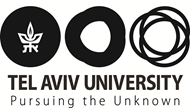In The Mind's Eye
In the Mind’s Eye
How can we make sense of the fact that there are things we cannot see, even though they are right in front of us, and then there are things we do see, but we do not know we have seen? And how can we explain the diverse manifestations of these phenomena in different people? What determines where we choose to focus our visual attention? And how do we gather information about the invisible? It was previously thought that there is complete separation between sensory perception and cognitive processes, but today many studies indicate that mental structures decide how we see our surroundings. These two actions – seeing and thinking – are inextricably linked to one another, and have an intricate and complex reciprocal relationship. The project “In the Mind’s Eye” traces the multifaceted association between perception and cognition, as well as our different blind spots around them, through two exhibitions and a program of special events.
The exhibition “In the Mind’s Eye” sets out to situate the visual in relation to the cognitive from multiple perspectives. It is based on a dialogue between artists and researchers from Tel Aviv University, working in diverse fields such as neuroscience, psychology, zoology, astrophysics and more. In this unique dialogue, the artists are free from the cause-and-effect relationship found at the core of scientific thinking. They offer experiences that delve into perspective shifts, visual attention, dreamscapes, the search for the invisible, and the relationship between the visual and the auditory. With that, they expand the boundaries of the mind around several issues: the interrelation between the artificial and natural, and between the human and animalistic, the impact of anxiety and trauma on perception, the intermediate states between wakefulness and sleep, the activation of visual memory, and the limits of human perception.
The exhibition “Drawing Art History” asks: What types of thinking are facilitated by the unique observation practiced while drawing? How can drawing, essentially an act of perception that takes place within the operative human body, contribute to the production of scientific knowledge? In this exhibition, the interplay of vision and cognition is examined through drawings made by art historians as a tool of academic research. This is the first ever exhibition to present new discoveries about how some of the most prominent art historians, including Meyer Schapiro, Leo Steinberg, and Aby Warburg, have used drawing to study art. This phenomenon is also true of the founder of art history in Israel, Moshe Barasch, whose newly discovered drawings are displayed here for the first time.
According to Jacques Derrida, drawing is deeply connected to blindness: The act of drawing blinds the person who draws, and this blindness becomes a part of the drawing’s meaning. As a medium, drawing holds not only the emergence of the visible but also its withdrawal and suspension. It captures the chasm between what can be seen and what can be shown, and follows the traces of what only exists as a memory. This theory offers a lens through which one can contemplate “In the Mind’s Eye” project as a whole and aspects of blindness and memory revealed through artistic contemplation.
Curator: Dr. Tamer Mayer
Assistant Curator: Darya Aloufy
Participating artists ("In the Mind's Eye"): Maya Attoun, Keren Gueller, Shir Lusky, Noy and Tamir, Eshchar Hanoch Kliengbiel, Ronen Sharabani


